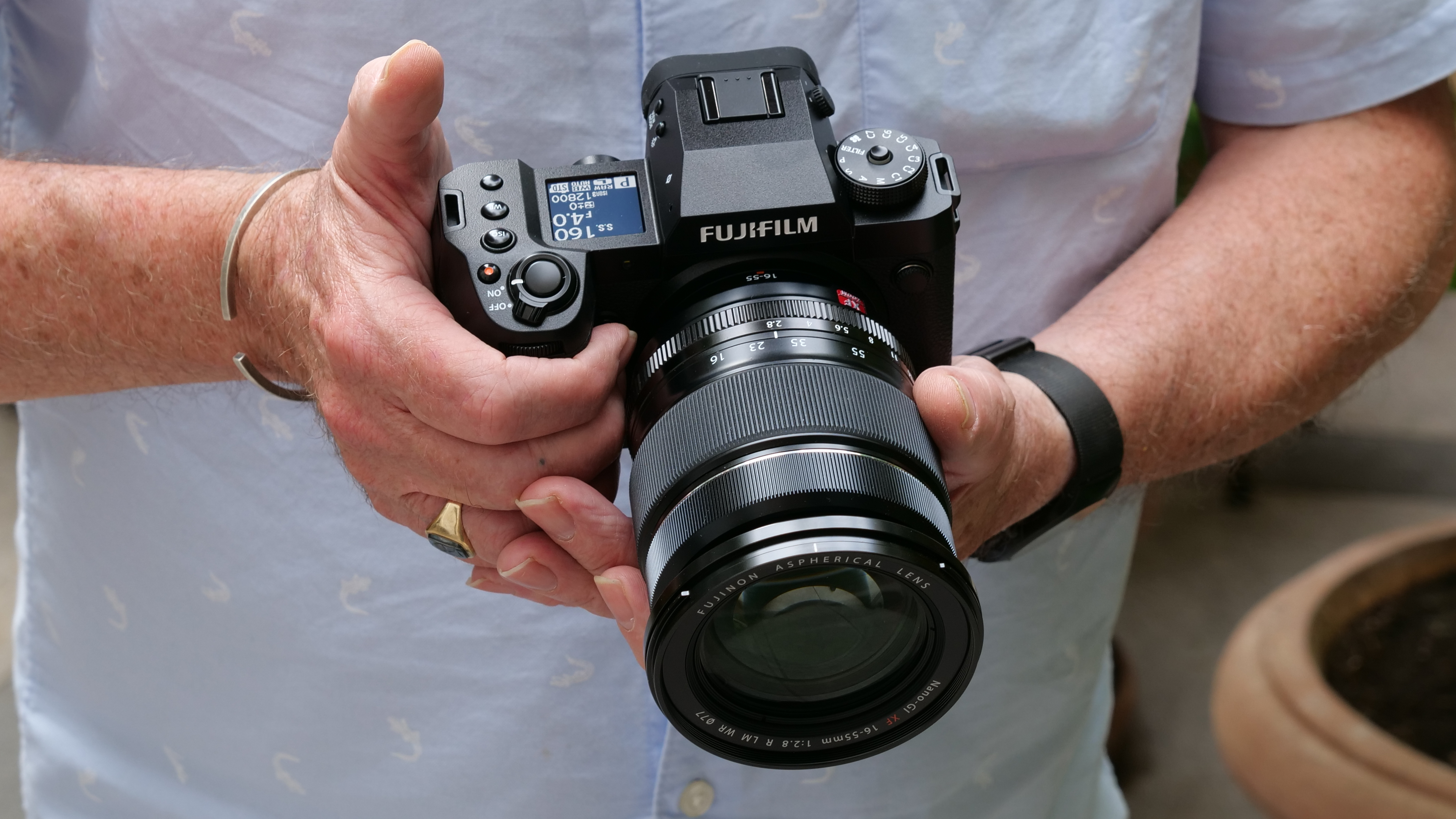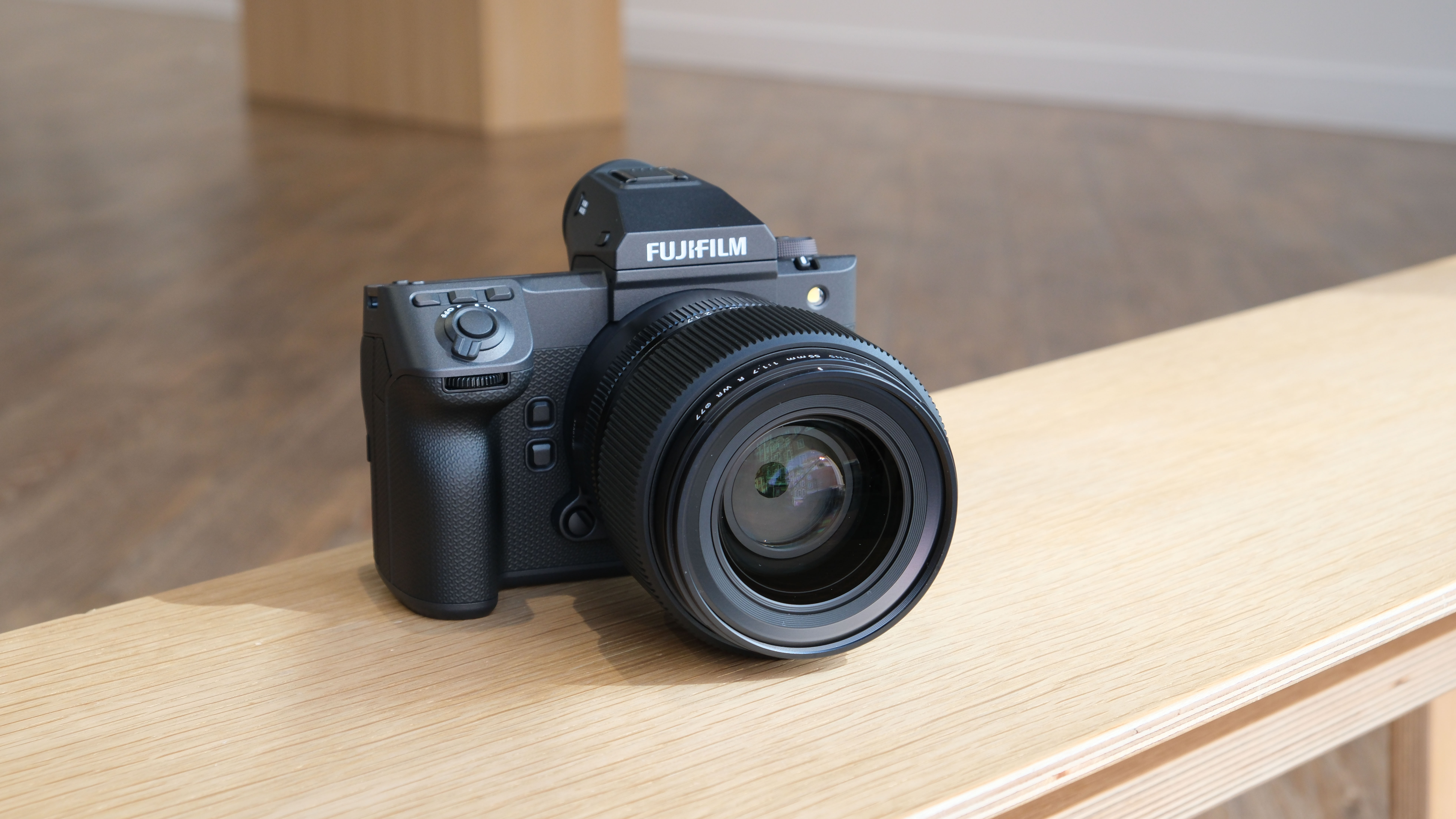Fresh Fujifilm firmware finally gives the X-H2, X-H2s, GFX100 II autofocus and video makeovers
The cameras see another autofocus update, as well as two key video updates

Fujifilm’s top-tier cameras are finally getting a highly anticipated update to autofocus algorithms and video features. Launched on November 21, the firmware updates to the Fujifilm X-H2, X-H2S and GFX 100 II bring improved autofocus algorithms, a new wider color mode for video, time code syncing, and bug fixes.
The three updates notably don’t touch the X-T5 or X-S20, but Fujifilm previously said those cameras would see autofocus updates before the end of 2024.
The list of updates across the X-H2 bodies and the medium format camera reads with identical new features, although the bug fix updates vary for each camera body. The latest firmware is version 5.10 for the X-H2, 7.10 for the X-H2s, and 2.30 for the GF X100 II. All three firmware updates are available directly from Fujifilm's website, while both H-model cameras can also be updated using the Fujifilm Camera Remote app. Photographers using the FT-XH battery grip will also need to update the grip’s firmware.
For still photographers, Fujifilm says the new firmware offers a revised autofocusing algorithm. The company says that the update enhances “focusing accuracy and subject tracking performance.”
The update isn’t the first firmware designed to improve the accuracy and up the hit rate of the X series autofocus performance, including updates launched in June following user complaints.
As a Fujifilm photographer myself, that’s a key feature that Fujifilm needs to continue to work to improve. I chose Fujifilm for the color science, but if I were a sports or action photographer, I would have leaned more towards Canon and Sony. I’ve been reviewing cameras for more than ten years, and Fujifilm seems to still lag behind in autofocus. The X-H2 series offers the brand's best performance out of the X-Trans models, so a continued focus (pun intended) on improving accuracy is a good sign.
Firmware brings more video features, but what is F-Log2 C?

The other two key features arriving on the latest version of firmware are geared towards video. The first is the addition of F-Log2 C mode, which Fujifilm says offers a wider color gamut over the existing F-Log2. The setting is designed to enable more flexible color editing in post.
The best camera deals, reviews, product advice, and unmissable photography news, direct to your inbox!
In an info sheet on the new setting, Fujifilm explains that “F-Log tone is a digital equivalent of the density characteristics of negative film, and is generally highly compatible with the various post-production methods that have been developed in movie taking fields. In addition, the color gamut is designed with ease of color grading.” Editors may need to also download the new LUT file for editing the F-Log2 C footage.
The second key video-centric feature added to the three cameras in the latest firmware is the ability to sync the camera’s clock by using a device connected to the USB-C port. Fujifilm notes that the feature is designed to be used when capturing audio on a separate device, or using multiple cameras to shoot a movie. Previously, the time code could be synced manually or using a Bluetooth connection.
However, as a wedding photographer that shoots with one camera on each hip, I can see the time stamp sync benefiting more than just videographers. One highly annoying process of culling wedding images is rearranging the shots that inevitably end up out of order between my two cameras. The update could prove to be a nice addition to any multi-camera user across stills and video, although the existing Bluetooth sync option may be a better fit for stills shooters.
The firmware updates also fix a few bugs, with the X-H2 and X-H2s getting some fixes for scenarios that caused the camera to freeze. The medium format fixes an error that didn’t retain the manual focus position if the camera was powered off.
All three firmware updates are available to download directly from Fujifilm for the GFX100 II, X-H2, and X-H2S.
You might be interested in the best Fujifilm cameras from the rest of the range, along with the best Fujifilm lenses, along with the best Fujifilm GF lenses for medium format.

With more than a decade of experience writing about cameras and technology, Hillary K. Grigonis leads the US coverage for Digital Camera World. Her work has appeared in Business Insider, Digital Trends, Pocket-lint, Rangefinder, The Phoblographer, and more. Her wedding and portrait photography favors a journalistic style. She’s a former Nikon shooter and a current Fujifilm user, but has tested a wide range of cameras and lenses across multiple brands. Hillary is also a licensed drone pilot.
